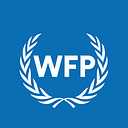The WFP Innovation Challenge 2020 in Figures
How WFP’s latest Innovation Challenge applications reflect the diversity and focus of the innovation sector
By Vida Gabe and Gulia Rakhimova
This year’s WFP Innovation Challenge 2020 received a record-setting 793 applications from 95 countries around the world, improving on last year’s challenge which brought in 714 applications in 2019. That the applications were sourced in a year when a global pandemic is taking place is significant and speaks not only of the amount and variety of innovative ideas available all over the world, but also of the genuine desire of people to innovate towards Zero Hunger.
Let’s take a closer look at this year’s Innovation Challenge applications and see how they compare to last year’s statistics.
Global diversity
As mentioned above, the 793 applications we received in 2020 came from 95 different countries in all seven regions of the world.
Similar to the findings from last year’s WFP Innovation Challenge, the majority of the applications this year (62 percent) came from the Sub-Saharan African region, with Kenya leading the pack with 106 applications, followed by Nigeria (100 applications), and Uganda (55 applications).
The findings for this year do not differ from the 2019 findings, where the majority (64 percent) of the applications received also came from the Sub-Saharan African region, with Nigeria, Kenya and Ghana submitting the most applications.
This year’s strong focus on Africa is in part due to the WFP Innovation Accelerator’s collaboration with the newly developed Innovation Hub at the WFP Regional Bureau for East and Central Africa based in Nairobi, Kenya (RBN).
Countries by income level
Looking at the countries by income level, similar to 2019, more than half of the applications (64 percent) we received this year were from middle-income countries such as Nigeria, Kenya and India.
This year, the percentage of applications from high-income countries increased from 14 percent in 2019 to 17 percent in 2020. While the Innovation Challenge welcomes applications from all countries and regions of the world, we believe in the importance of encouraging applications from low-income countries, where the need for innovative solutions is greater and more urgent, and we wish to support local solutions developed for local challenges.
Gender diversity
In terms of gender diversity, this year’s Innovation Challenge saw a slight decrease in the percentage of women applicants compared to last year (34 percent vs. 36 percent); however a slight increase in the percentage of non-identifying applicants was also observed (6 percent vs. 2 percent). More work still needs to be done to improve gender representation in innovation.
Focus areas
This year, the majority of the solutions (34 percent) put forward were in the area of local food security and smallholder farmers support; followed by solutions directed towards: sustaining and creating livelihoods or operating within the humanitarian-development-peace nexus (14 percent); addressing the need for affordable and nutritious diets or school-feeding programs (13 percent); improving logistics and supply chain (11 percent), and solutions on innovative fundraising and financing (9 percent).
It’s important to note that many of the applications took in the current health environment and strove to address the challenges brought about by the COVID-19 pandemic. These included solutions on conducting data collection remotely and improving access to phones and the internet.
What’s next
Classifying and collecting information on all the 793 applications we’ve received is just the first step. We are reviewing each application in order to identify the top 10 teams that will be joining our virtual Innovation Bootcamp from 30 November to 4 December 2020.
If your team is one of the 793 applicants to this year’s Innovation Challenge, watch this space as we’ll be announcing the finalists very soon.
If you missed the deadline for the WFP Innovation Challenge 2020, remember that anyone can apply at any time through our rolling call for applications, and will be considered for future innovation bootcamps. Details on our next Innovation Challenge will be posted on our website in the coming weeks.
Thank you to everyone who applied to this year’s challenge and all of you who continue to work towards a world of Zero Hunger. Keep those solutions coming!
The WFP Innovation Accelerator sources, supports and scales high-potential solutions to end hunger worldwide. We provide WFP staff, entrepreneurs, start-ups, companies and non-governmental organizations with access to funding, mentorship, hands-on support and WFP operations.
Find out more about us: http://innovation.wfp.org
Subscribe to our e-newsletter
Follow us on Twitter and LinkedIn and watch our videos on YouTube
